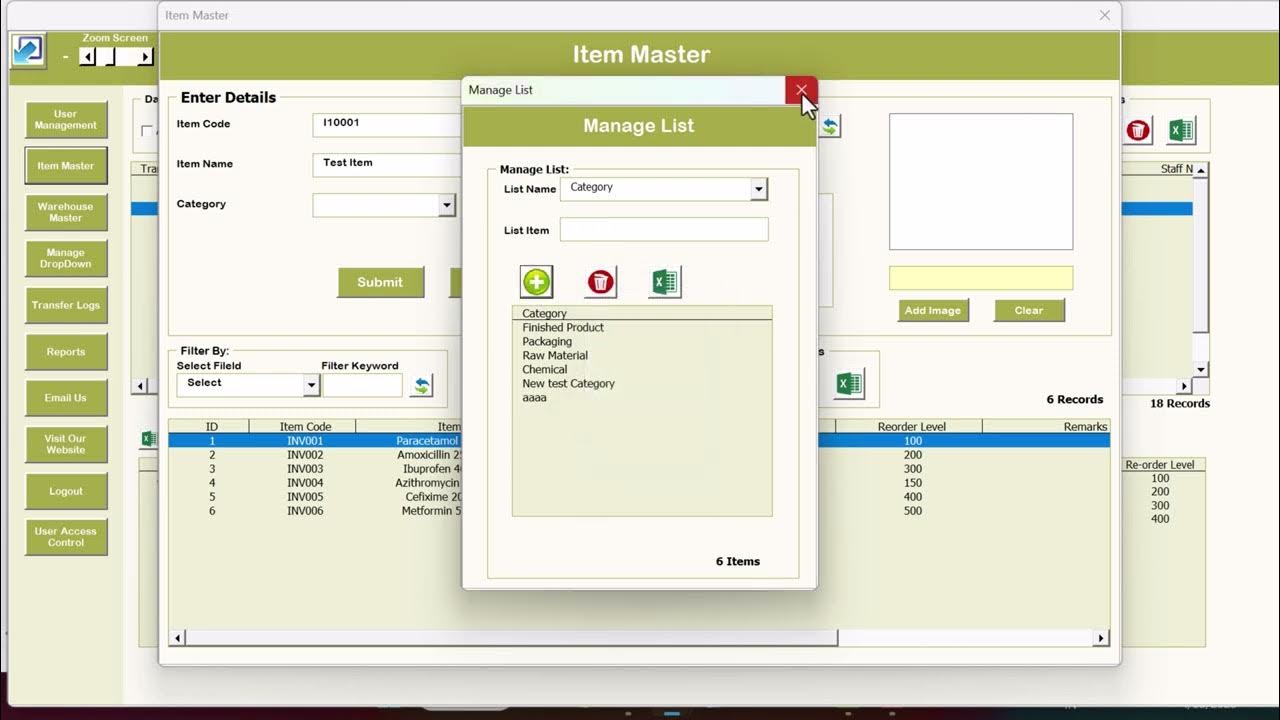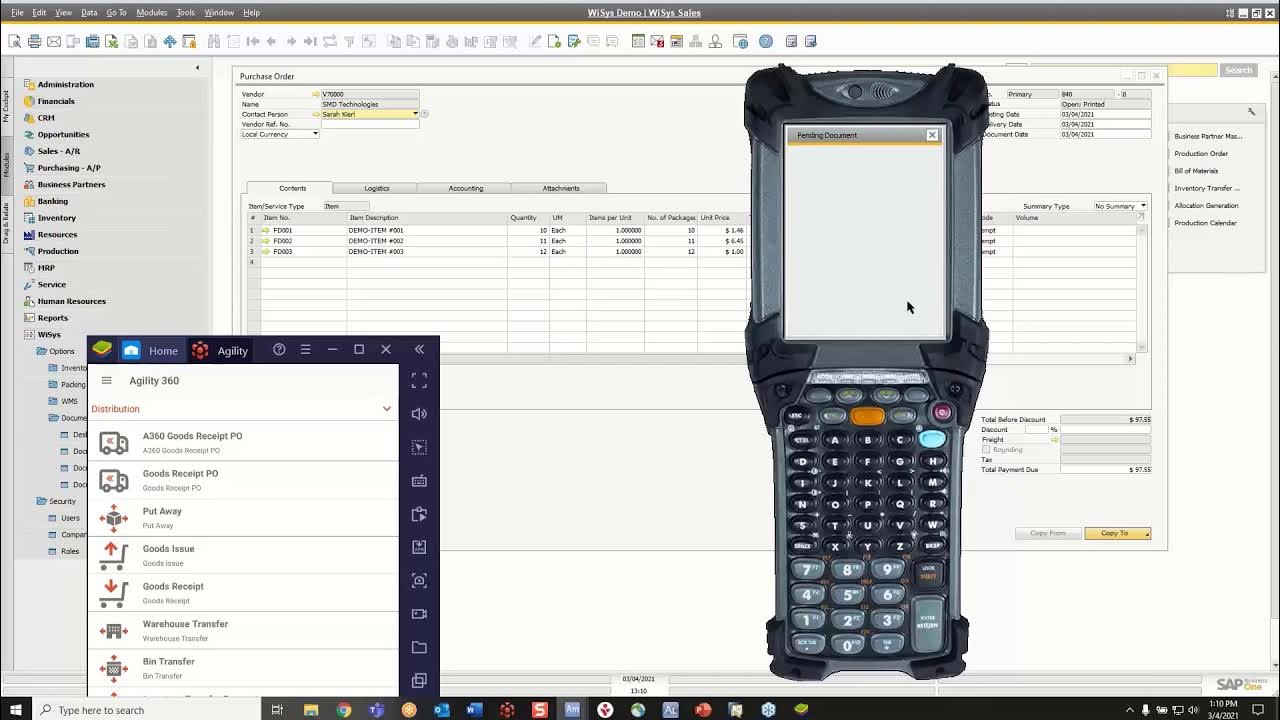SAS Demo
Summary
TLDRThe transcript revolves around a user interacting with a complex online platform for transactions and inventory management. The user navigates through logging in, updating profiles, and managing product stock. They encounter various challenges such as dealing with product prices, transaction rates, and quantity changes. The process includes adding new products, editing costs, and updating stock for different items. The script also touches on customer service tasks, the handling of reports, and transaction certificates. There is a recurring theme of managing data, addressing objections, and refining the system for smoother operations.
Takeaways
- 😀 Users are required to log in with their username and password, with '1234' as the default login credentials.
- 😀 The website allows users to update their profile, add an email ID, and manage sections related to inventory and product transactions.
- 😀 Products can be selected from the inventory, and users can choose to make a transaction with quantities specified.
- 😀 A transaction system allows users to manage products such as pencils and other items, with specific quantities and IDs.
- 😀 Transaction records include important information like product IDs, quantities, MRP, and total price.
- 😀 The platform includes features for updating and editing product details such as cost prices and selling prices.
- 😀 Users can add new products to the inventory, such as a 'banana' product, with set cost prices and selling prices.
- 😀 The website includes options for managing stock levels, handling national and international transactions, and updating inventory.
- 😀 A system for generating charts and graphs related to transactions and inventory updates is available.
- 😀 There are error handling and feedback features, such as generating certificates and audit reports for specific transactions.
- 😀 Notifications for specific transactions and updates, such as a market or product update, can be viewed or ignored by users.
Q & A
What is the main purpose of the login system described in the transcript?
-The login system allows users to authenticate themselves using a username and password to access specific features, such as managing product inventory and executing transactions.
How does the product inventory system function?
-The product inventory system enables users to view, edit, and manage product details, including prices and quantities. Users can update product information and track inventory using product IDs.
What are the key operations involved in managing transactions?
-Transactions involve selecting products from the inventory, adjusting quantities, updating product IDs, and processing the transaction through a transaction sheet or system interface. Transactions may include price adjustments and product updates.
How are reports and data visualizations generated in the system?
-The system is capable of generating interactive reports and graphs, likely related to transaction history and inventory management. These visualizations help users track changes in product stock and transaction outcomes.
What role do user profiles and email IDs play in the system?
-User profiles allow users to manage their information, such as email IDs. This data is essential for account management, login, and potentially receiving notifications or updates from the system.
What does the term 'vacancy username' likely refer to?
-The term 'vacancy username' likely refers to the placeholder or the specific username a user must use to log in or update their profile within the system.
What is the significance of the reference to 'loot' throughout the script?
-The repeated mention of 'loot' could be referring to a reward, bonus, or some form of in-app currency or promotion, although the exact context is unclear.
What are the different types of products mentioned in the script?
-The script mentions various products, including 'pencil,' 'banana,' 'turmeric,' and other items, each of which has its own inventory and pricing details.
What is the importance of product IDs in this system?
-Product IDs are used to uniquely identify each item in the inventory. They are essential for tracking stock levels, processing transactions, and managing product details.
How does the system handle price updates and changes?
-The system allows users to edit both the cost price and selling price of products. These changes are essential for maintaining accurate inventory and ensuring proper transaction pricing.
Outlines

このセクションは有料ユーザー限定です。 アクセスするには、アップグレードをお願いします。
今すぐアップグレードMindmap

このセクションは有料ユーザー限定です。 アクセスするには、アップグレードをお願いします。
今すぐアップグレードKeywords

このセクションは有料ユーザー限定です。 アクセスするには、アップグレードをお願いします。
今すぐアップグレードHighlights

このセクションは有料ユーザー限定です。 アクセスするには、アップグレードをお願いします。
今すぐアップグレードTranscripts

このセクションは有料ユーザー限定です。 アクセスするには、アップグレードをお願いします。
今すぐアップグレード関連動画をさらに表示

Java Collections Framework-Part3 | Interfaces And Classes | Methods in Collection & List Interfaces

Source Code Website Kasir Berbasis Web PHP : Demo Sistem Penjualan Barang atau Kasir Berbasis Web

Makalah Penelitian Sistem Informasi Penyewaan Mobil Berbasis Website Pada MY RENTAL MOBIL

Advanced Inventory Management System V1.0 for Multiple Warehouse

Security through Network Technologies and Design Elements

Introduction to WiSys Agility WMS for SAP Business One
5.0 / 5 (0 votes)
